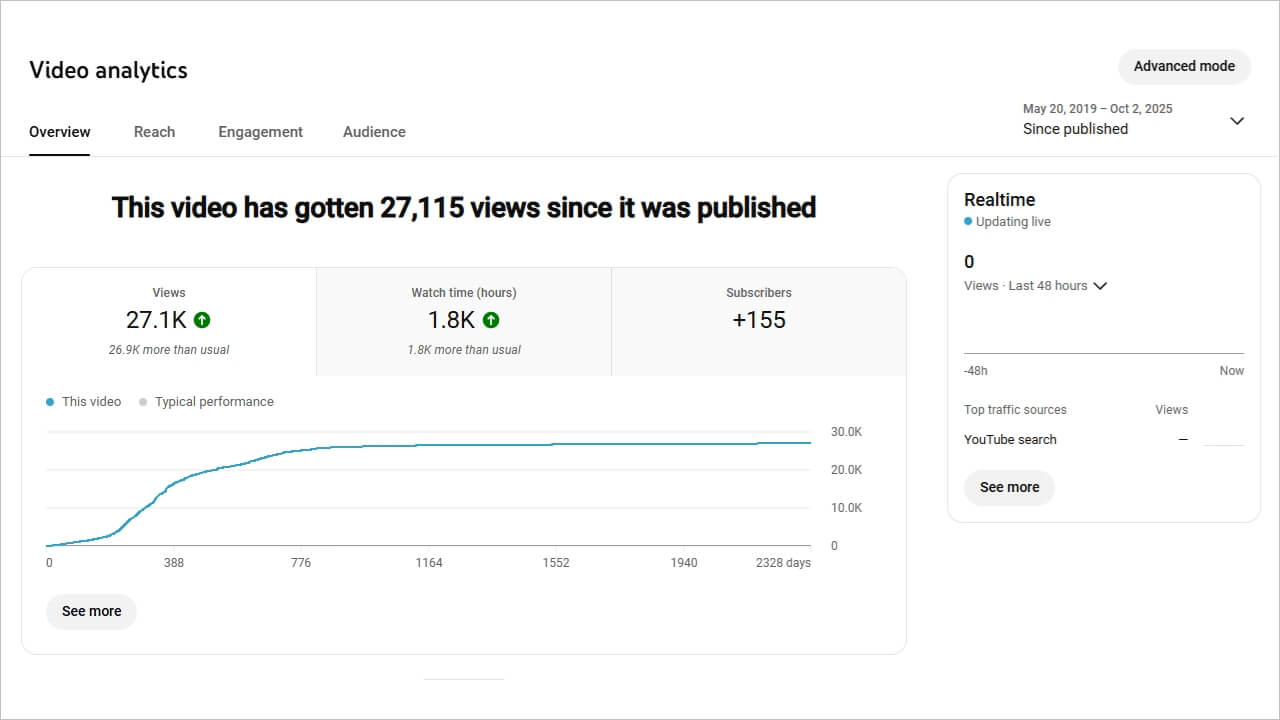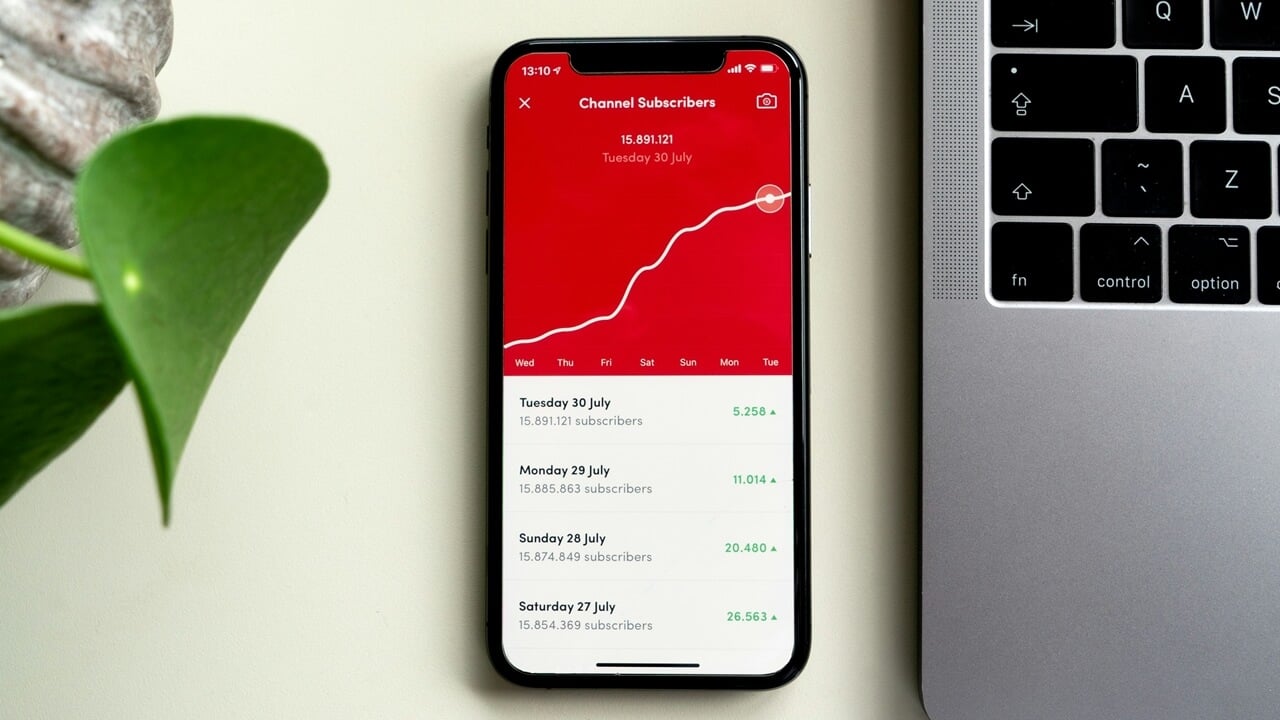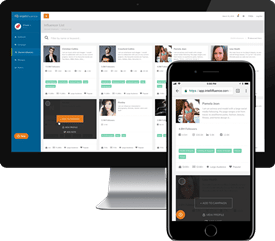In today’s creator economy, YouTube is more than just a video platform—it’s a launchpad for influence, creativity, and long-term brand partnerships. Unlike TikTok or Instagram, where content often trends for a few days before disappearing, YouTube provides permanence. Videos uploaded years ago can continue attracting viewers, generating ad revenue, and building authority. For influencers, this makes YouTube one of the most sustainable channels for growth.
From an influencer marketing perspective, YouTube is particularly valuable. Brands look to partner with creators who not only have reach but also credibility and depth in their storytelling. YouTube allows influencers to create product reviews, tutorials, vlogs, and even mini-documentaries that resonate with audiences on a deeper level. This creates long-form opportunities for brands to integrate authentically into content.
Take Marques Brownlee (MKBHD), for example. He began as a teenager filming tech reviews from his bedroom and now runs one of the most respected tech channels in the world. Similarly, Emma Chamberlain built her empire on casual, relatable vlogging that redefined how Gen Z consumes lifestyle content. What these creators have in common is not only creativity but a sharp understanding of what works for their audience—and much of that knowledge comes from digging into YouTube Analytics.
Why YouTube Analytics Matters
Publishing videos consistently is important, but it’s not enough to fuel sustained channel growth. Success comes from paying attention to the numbers behind the scenes—the data that tells you what viewers like, what makes them click away, and how they discover your content in the first place.
That’s where YouTube Analytics comes in. Think of it as the engine room of your channel, filled with detailed reports that can guide smarter decisions. Whether you’re trying to increase watch time, expand your reach, or refine your content strategy, YouTube Analytics provides the roadmap.
Before diving into the specific YouTube Analytics features, it’s helpful to remember one thing: these numbers aren’t just statistics. They represent your audience’s behavior and preferences. Interpreting them correctly can mean the difference between a flat-lined channel and one that’s steadily climbing in subscribers, views, and brand opportunities.
The Most Important YouTube Analytics Features for Growth
Instead of seeing analytics as overwhelming spreadsheets, it helps to think of them as feedback loops. Each metric tells a story about your content, your audience, and your overall growth strategy.

When influencers learn to read these stories, they can fine-tune their videos and accelerate success. Here are the most important metrics to focus on:
1. Watch Time
Watch time is the backbone of YouTube growth because it measures how much time people actually spend watching your videos—not just clicking in and leaving.
-
Why it matters: High watch time shows YouTube that viewers find your content valuable, making it more likely to be promoted.
-
How to use it: Analyze which videos keep people watching longest. Were they structured differently? Did you include storytelling elements that kept interest high? Use these patterns to design future content.
2. Audience Retention
If watch time is the big picture, audience retention is the zoomed-in version. It shows exactly when viewers drop off—or stick around.
-
Why it matters: Retention helps pinpoint weak spots in your videos. If viewers bail in the first 15 seconds, your intros may not be engaging enough.
-
How to use it: Experiment with faster hooks, shorter intros, or teasers that hint at what’s coming later in the video.
3. Demographics
Your audience demographics—age, gender, location, and device type—tell you who’s really watching your content.
-
Why it matters: These insights help you create content that speaks directly to your biggest audience groups and pitch partnerships that align with them.
-
How to use it: If most of your viewers are watching on mobile, prioritize mobile-friendly visuals and subtitles. If your largest audience segment is Gen Z, lean into trends and cultural references that resonate with them.
4. Reach (Impressions and Click-Through Rate)
Reach data shows how widely YouTube is distributing your videos and how effectively your thumbnails and titles convert impressions into views.
-
Why it matters: A video with high impressions but low CTR isn’t grabbing attention.
-
How to use it: A/B test thumbnails, use curiosity-driven titles, and ensure your branding is clear. Small tweaks here can dramatically increase overall traffic.
5. End Screen Element Click Rate
End screens are prime real estate for keeping viewers engaged after they finish a video. Analytics shows you which elements get clicked.
-
Why it matters: Effective end screens keep people on your channel, increasing total watch time.
-
How to use it: Link to related videos or playlists instead of random uploads, and encourage viewers verbally to click through.
6. Traffic Sources
This feature shows where viewers found your video: YouTube search, suggested videos, or external links.
-
Why it matters: It reveals how your audience discovers you, helping you focus energy where it matters most.
-
How to use it: If most of your views come from search, double down on SEO-friendly titles and descriptions. If suggested videos drive traffic, study those related creators to see what works in your niche.
7. Engagement Metrics (Likes, Comments, Shares)
Beyond passive viewing, these metrics measure how actively your audience interacts with your videos.
-
Why it matters: Engagement not only boosts the algorithm but strengthens community.
-
How to use it: Ask direct questions in videos, respond to comments, and create interactive calls-to-action that encourage participation.
Learning to interpret metrics is one thing—putting them into action is where real growth happens. Influencers who use data as a feedback system can steadily refine their strategies.
Here’s how to use analytics insights systematically for video performance growth:
Spot Winning Formats – Use watch time and retention data to figure out which content formats resonate most. Double down on them.
Refine Video Length – Look at retention graphs to discover your sweet spot. Trim or expand future videos accordingly.
Optimize Posting Times – YouTube shows when your audience is active. Posting during those windows gives your video a stronger start.
Align with Demographics – Match your content style to your top audience segments while experimenting to attract new ones.
Promote Smarter – Use traffic source data to guide cross-promotion, whether on Instagram, TikTok, or blogs.
Test Thumbnails and Titles – Leverage CTR data to continually improve how your videos attract clicks.
Track Brand Campaigns – Show brands not just views but watch time, engagement, and audience fit. This data builds credibility and supports higher-value partnerships.
Going Beyond the Basics with Analytics Tools
While YouTube’s dashboard is powerful, creators often benefit from pairing it with the best YouTube Analytics tools like TubeBuddy, vidIQ, and Social Blade. These add-ons provide competitor benchmarking, SEO optimization, and trend prediction—helping creators fine-tune their strategies even further.
When combined with YouTube’s built-in data, these tools give influencers a complete performance picture, empowering them to plan smarter content calendars and spot opportunities before the competition.

Featured Influencer: Taylor Wattula
Hello and welcome! My name is Taylor and I’m just letting life take me wherever it goes. Right now, I have a factory job that I love, a wonderful boyfriend of 10 years, and 2 dogs that I would do anything for. In my free time, I go hiking, adventuring to ruins, amateur rock and fossil digging, and doing historical tours.
Growing on YouTube isn’t just about uploading consistently or chasing the next viral trend—it’s about listening to the data your audience gives you. Every watch time graph, retention curve, and CTR percentage is a clue about what your viewers want more of.
By mastering YouTube Analytics features and supplementing them with the best YouTube Analytics tools, influencers can create smarter content strategies, strengthen their brand partnerships, and accelerate video performance growth.
The difference between channels that plateau and those that thrive often comes down to this: creativity backed by analytics. The numbers are your map—the challenge is how well you use them.
Benefiting From Your Growth
For YouTubers looking to monetize content and grow their influence, Intellifluence offers one of the easiest entry points into influencer marketing. Unlike some platforms that charge creators to join, Intellifluence is completely free for influencers. This means that whether you’re just starting out or already have an established channel, you can sign up and immediately gain access to brand collaboration opportunities without upfront costs.
The process is simple. First, head to Intellifluence and join as an influencer for free. From there, fill out your profile and add all of your social media accounts.
You can then browse our Marketplace of active brand campaigns. These opportunities span many categories, from lifestyle and fashion to tech, travel, and consumer goods. Each campaign outlines the requirements and deliverables—such as producing a product review video, unboxing, tutorial, or brand integration—so influencers know exactly what’s expected before applying.
When you accept a pitch from a brand, communication and cash payments are managed directly within the Intellifluence platform. This eliminates the guesswork and ensures that creators are compensated for their work in a timely and transparent way. The platform also allows creators to build ongoing relationships with brands, leading to repeat partnerships and long-term sponsorship deals.
For YouTube creators who want to expand their reach, boost channel credibility, and earn income from their content, joining Intellifluence is an accessible and effective step. With no membership fees, a wide variety of brand opportunities, and a user-friendly interface, it’s a straightforward way to start participating in influencer marketing initiatives today.

SallyBot is committed to helping users get the most out of Intellifluence. By helping brands create campaigns, providing unparalleled customer service and offering useful advice, nothing makes SallyBot happier than hearing she is liked… Really, really liked.






